
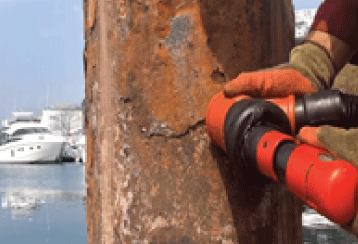
It is an essential corrosion control technique used to safeguard metal surfaces from deterioration. It is a critical requirement across multiple industries—particularly in oil & gas, petrochemical, and power generation—where infrastructure longevity and operational safety are paramount. Implementing cathodic protection not only enhances the durability of pipelines, storage tanks, and marine structures but also minimizes maintenance costs and mitigates the risk of structural failure.
In engineering applications, cathodic protection plays a vital role in ensuring asset integrity, regulatory compliance, and uninterrupted service in harsh environments.
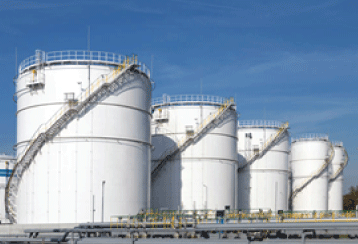
It is engineered to efficiently remove accumulated water from hydrocarbon storage tanks without manual intervention, ensuring uninterrupted tank operations. This automation helps prevent water contamination in hydrocarbons, thereby preserving product quality and minimizing waste.
Most importantly, it significantly reduces labour dependency and minimizes the risk of overdraw or product loss due to human error—making it a vital solution for operational efficiency and safety in oil & gas facilities.
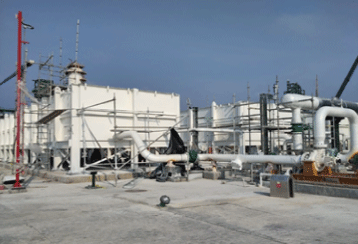
It is a treatment process designed to manage and separate oil, water, and suspended solids from industrial wastewater—commonly used in refineries, petrochemical plants, and power generation facilities. The system follows standards set by the American Petroleum Institute (API), primarily API Specification 421, which defines the design of oil–water separators.
The system effectively removes bulk oil and solids before advanced treatment stages, ensuring more efficient downstream processing. It also offers low operational costs compared to other treatment systems.
As a compliance requirement, the API Effluent System is essential for industries to minimize environmental impact and meet regulatory standards.
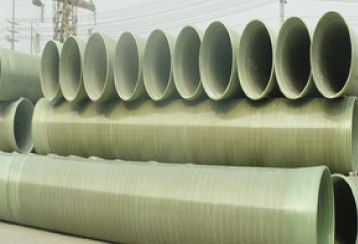
GRP / GRE / GRV piping systems are widely used in industries such as oil & gas, petrochemicals, marine, and power generation. They are highly valued for their superior corrosion resistance, lightweight construction, and long service life.
The systems are supplied with a complete range of pipe & fittings—such as elbows, tees, reducers, and flanges—along with prefabricated spools, ensuring easy installation and smooth integration into complex piping networks.
With their extended service life in corrosive environments and reduced installation time and cost, GRP/GRE/GRV piping systems provide a highly reliable and cost-effective solution for critical industrial applications.
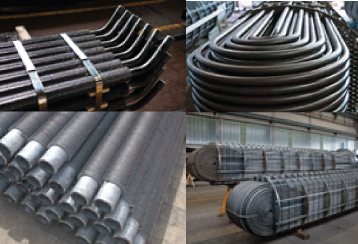
Studded tubes are heat transfer components with metal studs welded onto the outer surface of the tube. They are preferred in high-temperature and corrosive environments, such as furnaces and boilers in petrochemical plants.
Fin tubes feature extended surfaces (fins) welded or extruded onto the tube to enhance heat transfer efficiency. They are widely used in heat exchangers, condensers, and coolers.
U tubes are seamless or welded tubes bent into a U-shape, commonly used in U-tube heat exchangers for compact layouts and efficient thermal performance.
Tube bundles are assemblies of multiple tubes (straight or U-shaped) housed within a shell, forming the core of shell-and-tube heat exchangers.

Open Path Gas Detector is a continuous gas monitoring system designed to detect hazardous gases (Eg: HF) over a wide area using IR absorption technology. This technology is especially effective in large outdoor installations, refineries, chemical plants, and offshore platforms, where rapid detection of flammable or toxic gases is critical for safety.

Deluge Valve is a control valve used in fire protection systems to deliver large volumes of water or foam across a wide area. It is activated by a detection system—such as heat, smoke, or flame sensors—and opens fully to flood the protected zone through open nozzles or sprinklers.
It is considered as the heart of deluge systems, especially in high-risk environments like refineries, tank farms, offshore platforms, and transformer yards, where rapid fire suppression is critical.
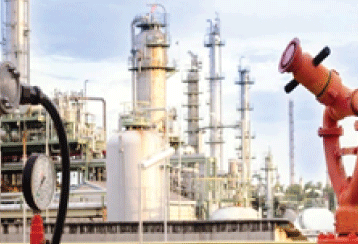
Fire monitors are high-capacity discharge devices designed to project water or foam over long distances for effective fire suppression and cooling. They play a critical role in protecting high-risk facilities such as tank farms, loading bays, offshore platforms, and refineries, where rapid response to large-scale fires is essential.
Monitors are available in different configurations, including: Manual – operated directly by personnel, Oscillating – designed for automatic sweeping coverage & Remote-controlled – offering safe, flexible operation from a distance.
It is a key component of industrial fire protection systems.
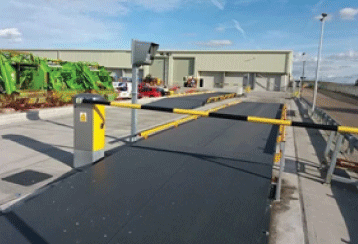
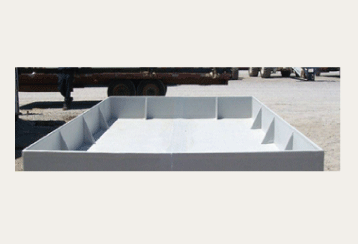
It is engineered to capture and isolate spills or leaks from primary storage units—such as tanks, drums, or pipelines. These open containments are constructed using FRP / GRP / GRE materials, offering excellent chemical resistance and durability in corrosive environments.
They are especially valuable in facilities handling hazardous liquids, hydrocarbons, or chemical waste, where environmental protection and regulatory compliance are critical.
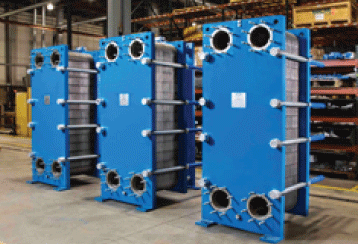
It is an equipment designed to transfer thermal energy between two or more fluids without mixing them. It plays a vital role in industrial processes by improving energy efficiency, regulating temperatures, and ensuring the safe operation of equipment.
Heat exchangers are widely applied in refineries, chemical plants, power stations, HVAC systems, and marine industries, where controlled heat transfer is essential for maintaining process integrity and achieving energy conservation.
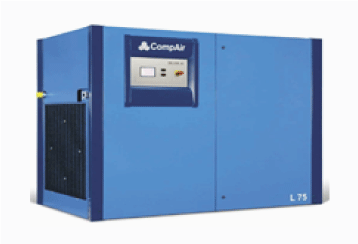
Compressor & CO Monitoring System integrates real-time diagnostics and safety controls to ensure the optimal performance of compressed air systems while protecting personnel from toxic gas exposure in plant.
These systems are used in refineries, power plants, chemical facilities, and underground operations, where compressed air is extensively used and CO buildup presents serious health hazards.
Key Advantages:
- Enhanced Safety – Protects personnel from CO poisoning and ensures breathable air quality.
- Operational Efficiency – Reduces energy waste and downtime through intelligent compressor control.
- Regulatory Compliance – Meets environmental and occupational safety standards.
Quick Links
Home
About Us
Portfolio
Industries
Clients
Careers
Blog
Contact
© 2025 ozarkinternational.com

